Te Puna Reo o Ngā Kākano and Ōtari School are two Enviroschools with a shared love for the ngahere. Lately, Te Puna Reo has extended their regular haerenga into the ngahere to include students from Ōtari School. This whakawhanaungatanga has not only deepened their experience in the ngahere, but also eases the transition from puna reo to kura.
Regular experiences in nature
Te Puna Reo o Ngā Kākano are an inner city early learning centre that became an Enviroschool in 2011. They have been committed to ensuring their tamariki connect with nature for many years, establishing a regular haerenga with the four year olds to Te Ahumairangi maunga in 2015. They have since expanded their commitment to taking all over two’s out into nature. Two year olds make regular trips to the local awa, Kaiwharawhara, and three year olds travel to Te Wao iti a Tāne, a local green space with plenty of room for running and plenty of rākau to climb.
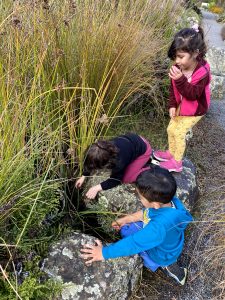
He aha tenei?
Ōtari School has been an Enviroschool since 2010 and has the unique advantage of their school backing on to the oldest original native forest in central Wellington. Ōtari School’s Māori Immersion strand is the most common school choice for students at Te Puna Reo o Ngā Kākano and so the two have an ongoing relationship including whakatau of new students moving on to kura.
Experiences enhanced through whakawhanaungatanga
The regular Te Ahumairangi trip for four year olds from Te Puna Reo takes place from 9am to 1pm and follows the students’ lead on how far to go and what activities or play take place. With half of the 2021 group having moved on to kura at Ōtari by June, a plan to extend the trip to connect with the graduates in Ōtari bush began to take shape.
In June 2021, Puna Reo tamariki walked as usual toward Te Ahumairangi but this time jumped on a bus to take them the extra four kilometres to the Ōtari bush reserve.
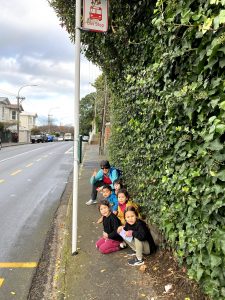
Tamariki ready for the bus trip.
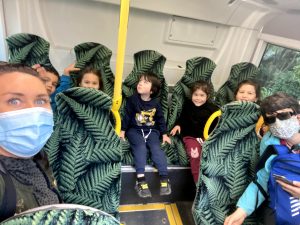
An exciting part of the haeranga.
The two groups met at the reserve’s entrance and it was like one big whānau again. The group walked to the Troupe Lawn to karakia and shared morning tea. Wonderfully, the space was buzzing with other school groups, some testing the water quality in the stream nearby.
Tamariki naturally connect
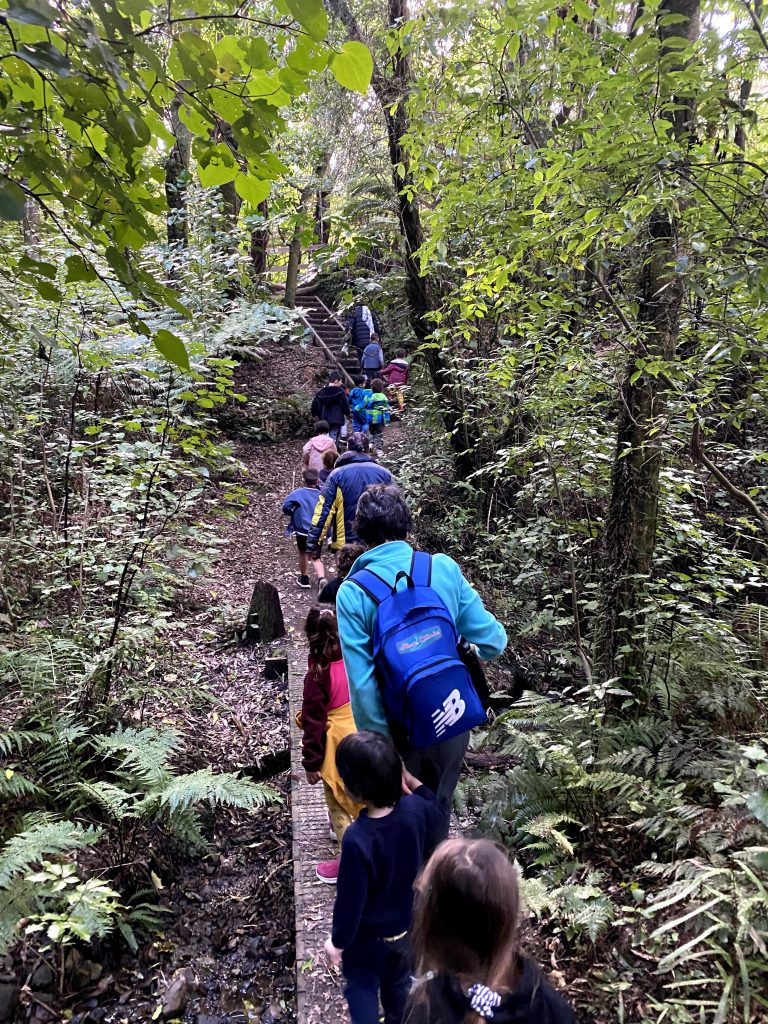
Kei roto i te ngahere.
The usual tikanga is to be in a space where the tamariki can have free play and follow their interests and feelings. When the pātai went out to students with options for the next action, all voted to visit the oldest rākau in the ngahere – the 850 year old rimu.
Their little legs powered up the hundred-odd bush steps, some needing to stop for breath but others literally running uphill. It was special to see that already the Puna and school groups had mixed and many were chatting and noticing bugs, leaves of different shapes, and unfurling fronds.
On reaching the rākau rangatira, many children went to mihi to the rākau and sit with its mana. The group then dispersed around the space engaging in quiet play. A group of students found a tree with long symmetrical buttressed roots and decided it was a waka. Others nearby were building homes for wētā and patupaiarehe. Two boys made birds with leaves as wings and sticks for bodies, and were happy to find kiekie growing nearby that offered some fallen leaves to bind their manu together.
Easing transition to school
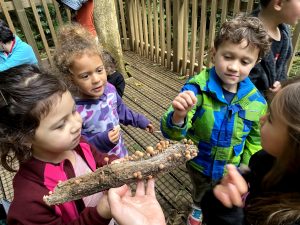
Tiny wonders.
This whakawhanaungatanga of both the tamariki with each other, and with the ngahere was really beneficial for the impact of transition that the children go through when leaving for kura, or when friends leave a gap at Puna. A parent of a tamaiti about to go to school said this chance for her child to see her friends from Puna and play in the ngahere has settled her daughter’s trepidation about the changes going to school may bring.
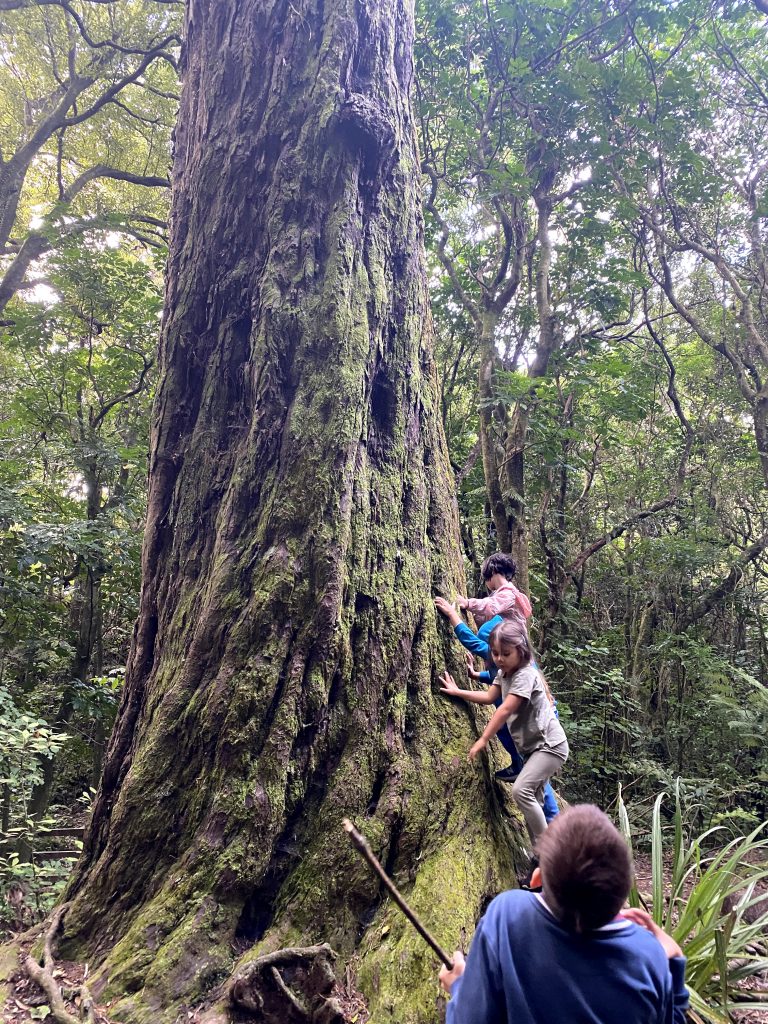
Mauri connection.
Connecting together in nature meant that the neutral ground was the perfect place to experience the place, and all the activities and games were shared rather than Puna or school owned.
‘Tamariki connect with the mauri of things/rakau/tipu in te taiao without being aware, and we see a deep relaxation and contentment in these settings,’ says Maureen the teacher from Te Puna Reo o Ngā Kākano.
Being connected to the whenua and in the ngahere provides many opportunities for story telling and understanding mātauranga Māori.
Lynette, the Ōtari teacher commented “It’s so amazing seeing them playing in the ngahere like our tīpuna would have.”
As the tamariki left the ngahere and each other at the end of the morning, many asked to do it again – a good sign for the ongoing relationships essential to learning and taking action together.
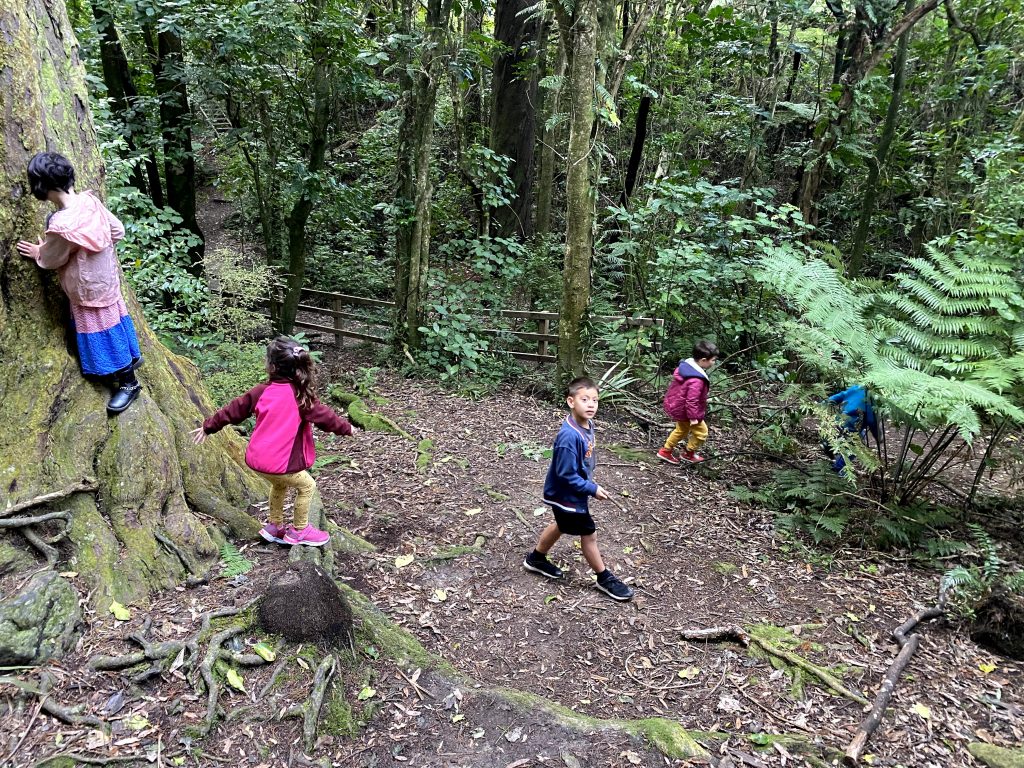
Playing in the ngahere like our tīpuna would have.
